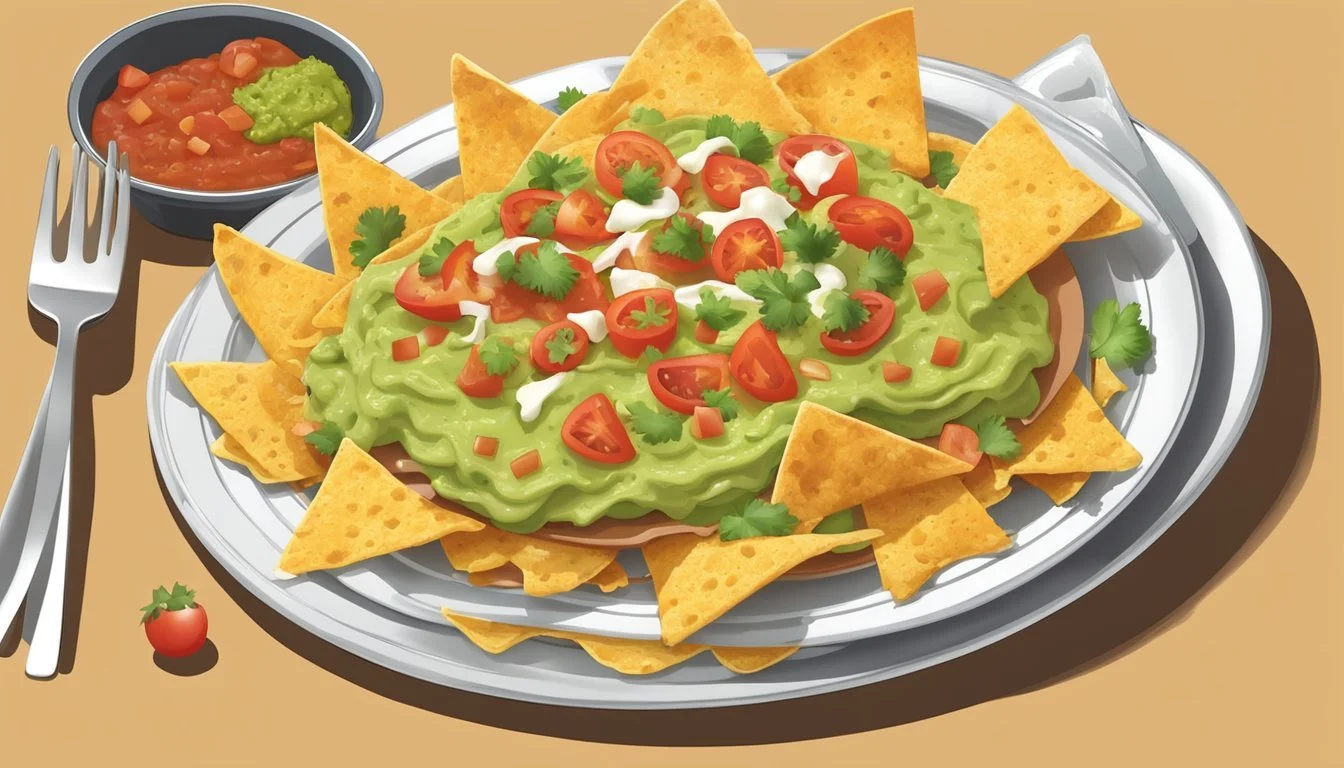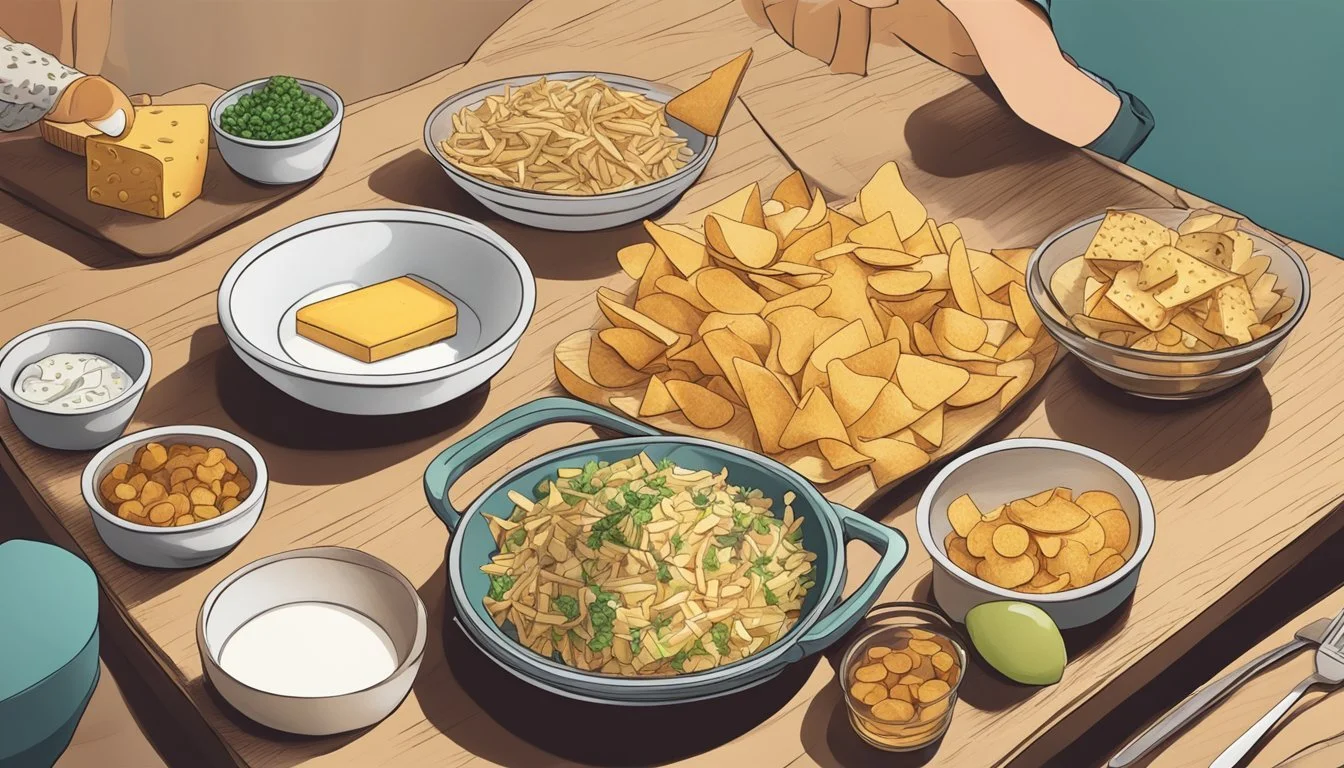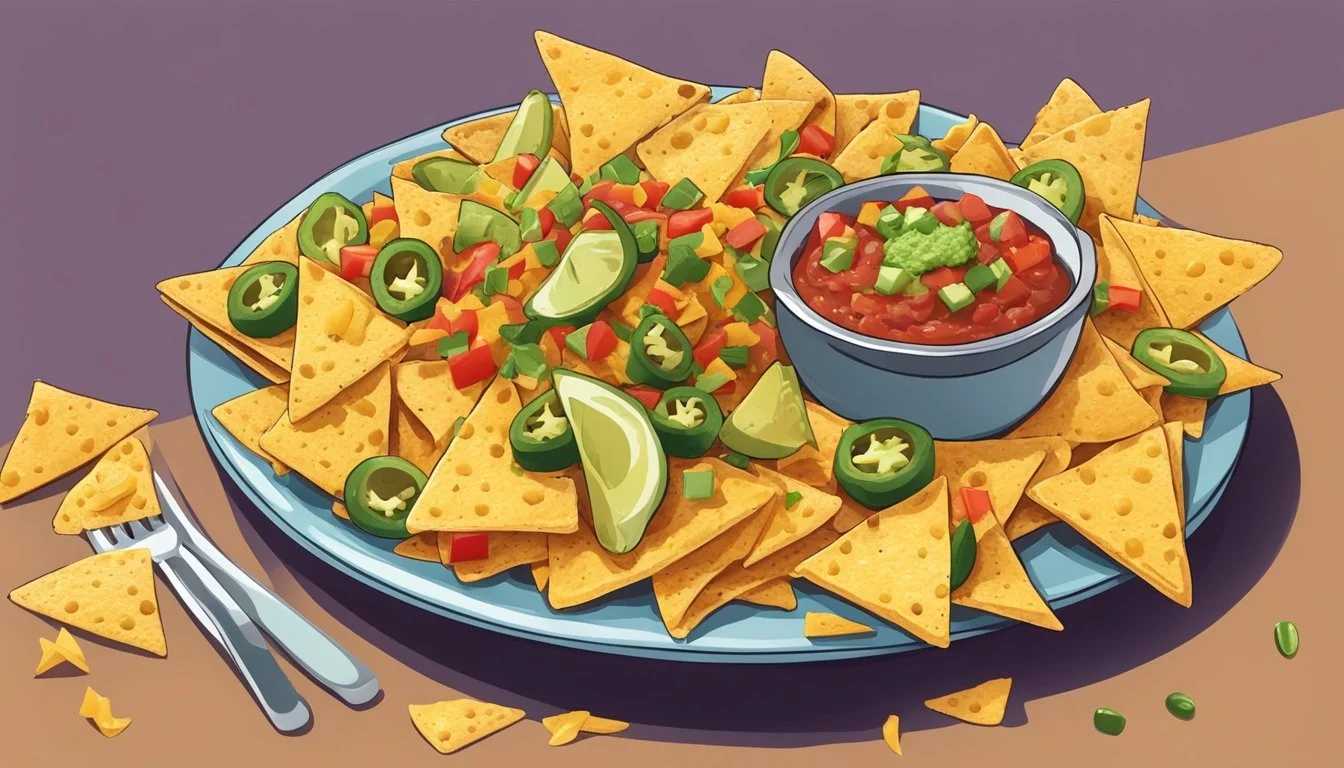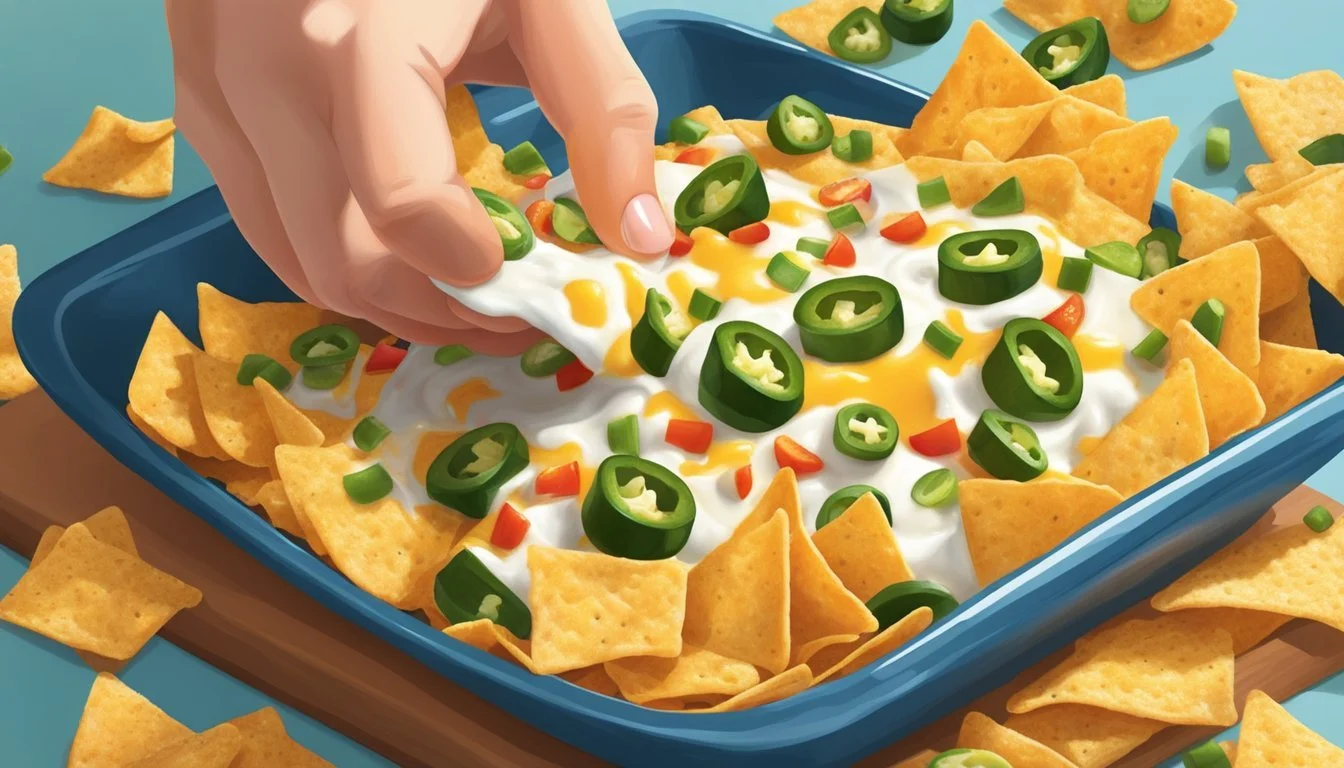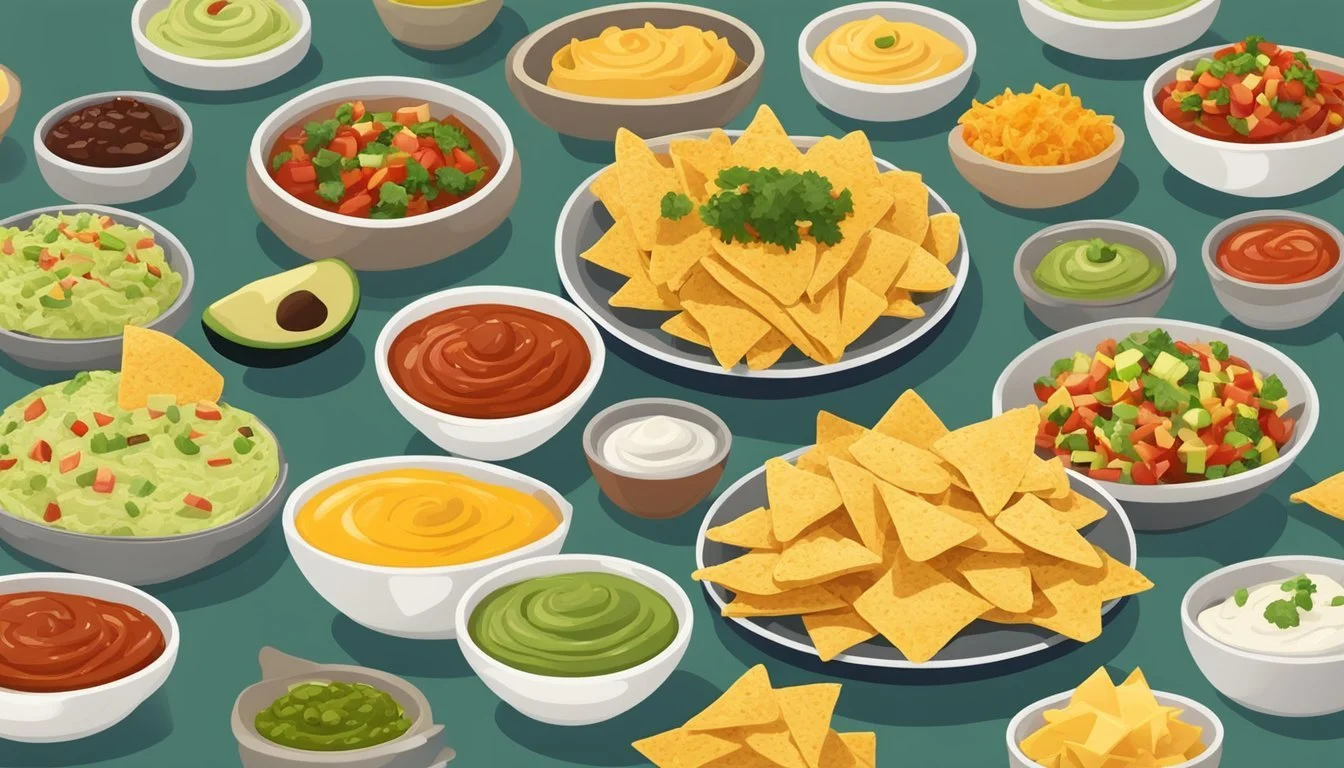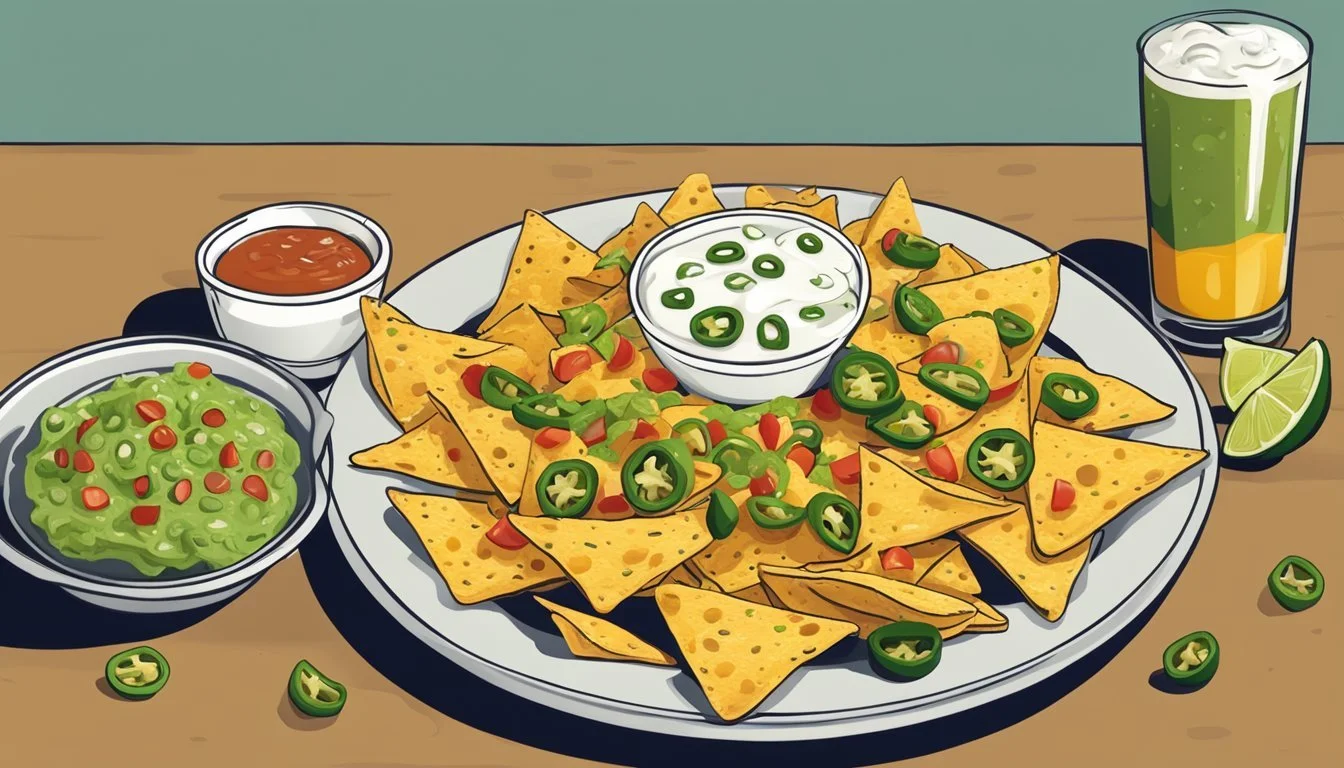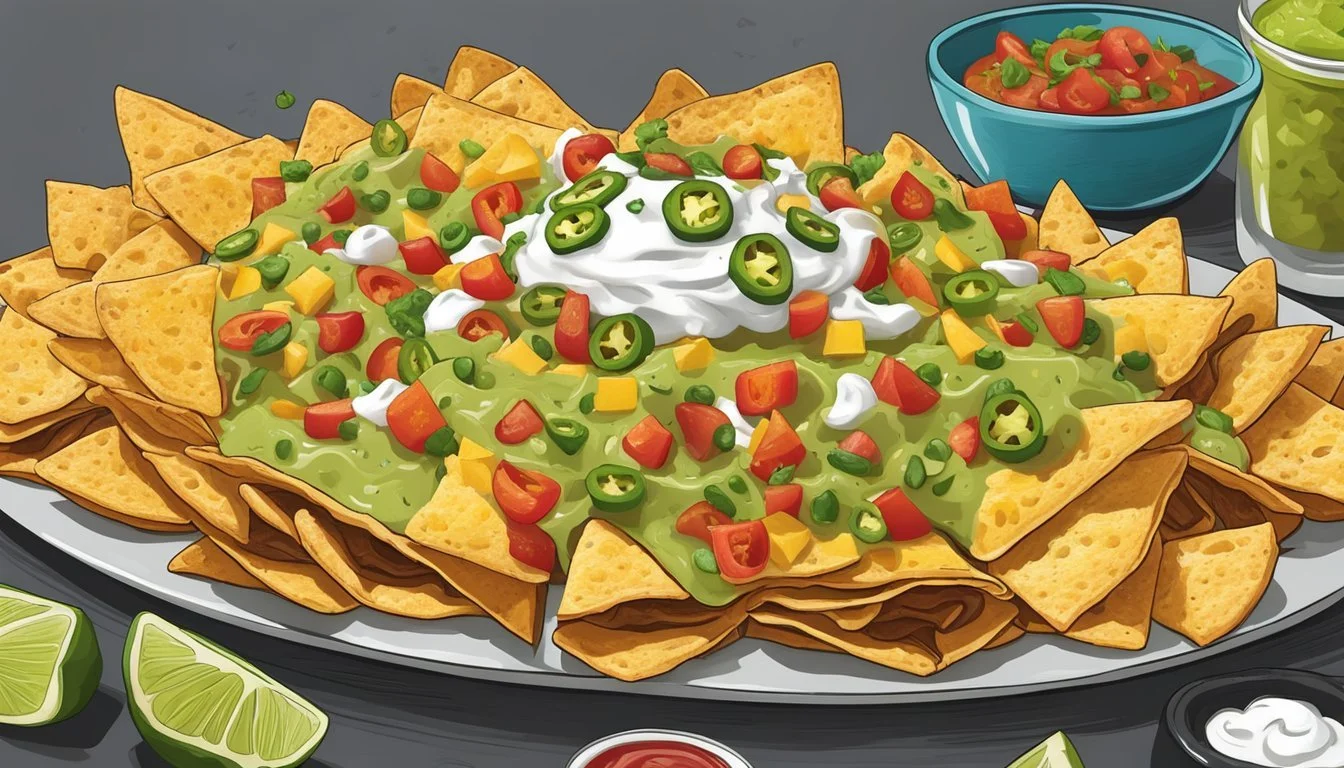How do you eat nachos?
Mastering the Art of Nacho Consumption
Eating nachos is a straightforward yet delightful experience that can be enjoyed across various occasions, from casual get-togethers to sports events. It involves a platter of tortilla chips that serve as a canvas for a variety of toppings such as cheese, beans, meats, and vegetables. The key to enjoying nachos lies in their freshness and temperature; they are best consumed warm to ensure the cheese is melted and the chips retain their crispness.
When consuming nachos, individuals face the choice of using their hands or utensils, with the former being the more traditional and commonly accepted method. It allows for selecting the perfect bite with the desired amount of toppings. Nachos are known for their generous and communal serving style, often placed at the center of a table inviting everyone to partake.
As with any popular dish, there are different approaches and preferences regarding the assembly and consumption of nachos. A well-constructed nacho ensures a balanced distribution of toppings so that each chip has a portion of the flavor-packed ingredients. While there’s no one right way to eat nachos, the experience can be made even better by pairing it with complementary sides such as Spanish rice or a refreshing beverage. The versatility and shareable nature of nachos make them a beloved snack for many.
The Basics of Nachos
In the realm of appetizers and snacks, nachos reign as a versatile and universally enjoyed dish. This section will elucidate their fundamental aspects and trace their intriguing origins.
What Are Nachos
Nachos are a traditional Mexican dish that consists of tortilla chips topped with melted cheese and often a variety of additional toppings such as jalapeños, beans, meat, and salsa.
Components:
Base: Tortilla chips
Essential Topping: Cheese (typically cheddar or a Mexican blend)
Common Extra Toppings: Beans, meats (ground beef or chicken), jalapeños, olives, sour cream, guacamole, and salsa
Cheese meltability is crucial for nachos, so most recipes recommend using a cheese that is known for its smooth melting properties. The layered assembly of nachos is critical, as it ensures that each chip is coated with a balance of flavors and textures.
The Origin of Nachos
Nachos were invented by Ignacio "Nacho" Anaya in 1943 in the city of Piedras Negras, Coahuila, Mexico, just over the Texas border.
Key Figures and Location:
Inventor: Ignacio "Nacho" Anaya
Location: Piedras Negras, Mexico
Circumstance: Improvised dish for a group of military wives stationed at a nearby Texas base
Anaya's original nachos consisted of fried corn tortillas covered with cheddar cheese and pickled jalapeño slices. This dish rapidly grew in popularity and crossed into Texas and beyond, becoming a staple in Tex-Mex cuisine.
Choosing Ingredients
Selecting the right components is crucial for creating the perfect plate of nachos. The choices of tortilla chips, cheese, protein, and toppings all contribute to the flavor and texture of the finished dish.
Types of Tortilla Chips
The base of any nacho dish is the tortilla chip. Homemade chips offer a fresher taste but require more effort. The chips should be thick enough to hold toppings without breaking. For store-bought options, look for sturdy and hefty chips to ensure they can support the weight of the cheese and toppings.
Selecting Cheese Varieties
The cheese chosen for nachos needs to melt well and be flavorful. Cheddar and Monterey Jack are popular choices for their meltability and taste. Varieties like sharp cheddar add a deeper flavor, whereas milder cheeses like Monterey Jack provide a creamy texture. A blend of the two can offer both qualities.
Protein Choices
Protein adds heft and flavor to nachos. Common options include shredded chicken, ground beef, or pulled pork. One can also choose beans for a vegetarian protein source; black beans and refried beans are traditional choices that add both flavor and substance.
Fresh vs. Canned Toppings
Toppings contribute to the freshness and overall flavor of the nachos. Fresh toppings like chopped tomatoes, onions, and cilantro provide a burst of flavor and a crisp texture. In contrast, canned ingredients such as pickled jalapeños can be convenient and add a uniform taste to every bite.
Preparing Nachos
Crafting the perfect plate of nachos begins with a thoughtful layering strategy and utilizing the oven effectively. For the adventurous cook, making homemade tortilla chips can elevate the final dish.
Layering Strategy
One should begin with a sheet pan, lined with aluminum foil for effortless cleanup. It is crucial to distribute a layer of tortilla chips evenly to provide a sturdy foundation. Each chip deserves attention; it should be coated with an ample amount of cheese and desired toppings. This ensures every bite is flavorful and no chip is left behind to potentially burn.
Oven Baking Tips
Baking nachos requires a preheated oven, typically around 400 degrees Fahrenheit. One should monitor carefully to prevent over-browning. The goal is to achieve melted cheese that blankets the chips and toppings, which usually takes about 5-10 minutes. It's recommended to check the oven periodically to ensure even baking and to adjust the sheet pan's position if necessary.
Making Homemade Tortilla Chips
For those opting to make homemade tortilla chips, the process begins with cutting corn tortillas into wedges. The wedges are then fried in oil or baked until they reach a golden crispness. If one has the inclination to bake the chips, laying them out in a single layer on a baking sheet and sprinkling with salt before placing in the oven will yield the best results. Homemade chips not only taste fresher but also provide a personalized touch to the nacho experience.
Customizing Your Nachos
Creating the perfect plate of nachos allows for a variety of toppings and flavors. Choices in vegetables, sauces, dressings, and additional toppings significantly influence the final taste and texture of your nachos.
Vegetable Additions
For a fresh crunch and a pop of color, vegetables play a vital role. Tomatoes and green onions add a milder flavor, while sliced black olives provide a savory bite. Pico de gallo offers a fresh, chunky tomato mix that can bring brightness to your dish. For those who enjoy a bit of heat, jalapeños, either fresh or pickled, are a popular choice.
Sauces and Dressings
Sauces and dressings enhance nachos with moisture and depth. Guacamole adds a creamy texture and rich flavor. It's essential to have a balanced salsa; choices range from mild to fiery hot. Sour cream provides a cooling effect which can be very helpful if your nachos are on the spicier side. Lastly, hot sauce is ideal for those who want an extra kick.
Extra Toppings for Flavor
Additional toppings complete the flavor profile of your nachos. Black olives, not only add to the vegetable layer but also contribute an additional salty note. Spoonfuls of guacamole and pico de gallo can make the dish more wholesome. To encompass all taste preferences, provide these toppings on the side, allowing each person to customize their nachos to their liking.
Serving Nachos
The art of serving nachos goes beyond mere plating; it's about creating an enjoyable dining experience. The method of presentation, the choice of beverages, and the approach to serving groups are crucial aspects that enhance the nacho-eating affair, whether in a restaurant setting or at home during a Super Bowl party.
Presentation Techniques
Nachos, often enjoyed as an appetizer or a casual dinner, shine when they're served hot and fresh. Restaurants frequently arrange nachos in layers to ensure an even distribution of toppings. For a visually appealing setup:
Start with a base layer of crispy tortilla chips.
Add generous amounts of cheese between layers.
Include a variety of toppings like beans, jalapeños, and proteins.
Garnish with fresh ingredients such as diced tomatoes, green onions, or cilantro for a touch of color and freshness.
Pairing with Beverages
The right beverage can complement the rich and spicy flavors of Mexican food. (What wine goes well with Mexican food?) Here are optimal pairings:
Beer: A cold lager or ale cuts through the richness of the cheese and enhances the experience.
Wine: For those who prefer wine, a light white or a slightly acidic red can balance the spice and savoriness.
When serving nachos, consider offering a selection of beverages to cater to different tastes.
Serving for Groups
Nachos are synonymous with sharing and are perfect for group dining scenarios such as Super Bowl parties or family gatherings. To serve nachos for a group:
Provide a communal plating method, like a large platter or tray for easy access.
Opt for individual portion sizes to avoid mess and ensure everyone gets an even share of toppings.
Include a range of condiments like salsa, guacamole, and sour cream on the side.
Remember, the key to serving nachos to a group is to ensure everyone can indulge in the combined flavors and textures.
Nachos Variations
Nachos, a beloved Tex-Mex dish, offer an incredible variety of twists that cater to different regional tastes and dietary preferences. They can range from indulgent to health-conscious without sacrificing flavor.
International Twists
Hearty Italian Nachos: Swap traditional tortilla chips for pita or pizza bread strips, topped with mozzarella cheese—a good source of calcium—and Italian sausage. Add a sprinkling of iron-rich olives and a tomato sauce base rich in vitamin C.
Asian Fusion Nachos: Corn chips gain new life with toppings like wasabi-infused mayonnaise, teriyaki chicken, and a slaw of daikon and carrots, providing a crunchy texture and a boost in dietary fiber.
Healthier Alternatives
Guacamole Goodness: Instead of calorie-dense, pre-shredded cheese, opt for a generous scoop of guacamole. It's packed with potassium and monounsaturated fats and garnish with diced avocado for extra nutrition and fewer calories.
Lean Leftovers: Use leftover grilled chicken or vegetables as a topping to cut down on saturated fat and cholesterol. Skip the heavy cheese and sour cream, opting for a sprinkle of low-fat cheese to reduce sodium and total fat.
By emphasizing fresh ingredients and mindful substitutions, nachos can remain a delightfully tasty treat with benefits for total carbohydrate, total sugars, and overall nutrition.
Post-Meal Considerations
After enjoying a serving of nachos, one should consider proper storage for leftovers, safe reheating methods to preserve texture and taste, and the nutritional impact of the meal.
Storing Leftover Nachos
Leftover nachos, although best enjoyed fresh, can be stored if done properly. In most cases, it is recommended to discard any remaining nachos as they do not store well and tend to become soggy due to the moisture from toppings. However, if one chooses to store them, they should be kept in an airtight container and refrigerated to prevent bacterial growth. It is important to note that nachos generally have a short shelf life, even when refrigerated.
Reheating Tips
Reheating nachos is challenging due to their tendency to become soggy. If one must attempt to reheat them, the oven or an air fryer is the preferred method. One should spread the nachos on a baking sheet in an even layer and heat at a moderate temperature, around 350°F, just until the cheese melts.
Microwave nachos are not recommended as microwaves can unevenly heat the nachos and exacerbate sogginess. If using a microwave is necessary, one should heat the nachos in short intervals, checking frequently to avoid overcooking.
Nutritional Information
Nachos are typically high in calories and saturated fats, especially when topped with copious amounts of cheese, sour cream, and fatty meats. They can, however, be part of a balanced diet if consumed in moderation with attention to portion sizes. One should consider the following nutrition facts for a standard cup serving of nachos:
Calories: Roughly 300-600, depending on toppings
Fat: High in saturated fat
Protein: Moderate, can be increased with lean toppings
Fiber: Can be boosted with vegetable toppings
They can be a good source of dietary fiber and proteins when loaded with vegetables and lean proteins like grilled chicken or beans. Balancing nacho intake with other nutritionally dense foods throughout the day is crucial for those mindful of their diet.
In summary, leftover nachos pose a storage and reheating challenge and should be consumed with consideration of their nutritional content.
Nachos in Popular Culture
Nachos have secured their status as a staple in popular culture, primarily due to their presence at public events and their frequent mentions in various forms of media and entertainment.
Nachos at Public Events
Nachos are synonymous with the experience of attending public events, most notably at sporting venues. During large events like the Super Bowl, they are a go-to snack for millions of viewers, both at the stadium and at home. These tortilla chips draped in melted cheese and various toppings are not just a quick concession stand offering, but part of the collective identity of sports enthusiasts who often voice their preferences or critiques - a sports commentator may even remark on the nachos seen in the stands.
Media and Entertainment References
In television and film, nachos are often associated with casual gatherings, relaxation, or as an indulgence during emotionally intensive scenes. The dish’s ubiquity is such that it’s not uncommon for nachos to have entire plotlines centered around them, or to be used as a prop to convey a laid-back atmosphere. References in sitcoms or movies may highlight the snack’s informal nature and its role in American comfort food cuisine.
Recipes and Cooking Tips
When making nachos, a proper balance of well-seasoned ingredients and the right cooking technique are crucial for the perfect batch. Using fresh toppings and a hot oven can transform simple ingredients into a delectable snack.
Classic Nachos Recipe
Ingredients:
Tortilla chips
Shredded cheese (a mix of cheddar and Monterey Jack is suggested)
1 can of black beans, rinsed and drained
Jalapeños, thinly sliced
2 tablespoons taco seasoning
1/2 cup diced tomatoes
1/4 cup chopped cilantro
Sour cream for serving
Instructions:
Preheat the oven to 450°F and arrange a rack in the middle.
Spread the tortilla chips on a baking sheet in an even layer, overlapping slightly.
Sprinkle the shredded cheese evenly over the chips.
Scatter black beans and jalapeños atop the cheese.
Dust the entire assembly with taco seasoning, focusing on areas with more toppings.
Bake for 6-8 minutes until the cheese is melted and the chips are slightly browned.
Remove from the oven and immediately top with diced tomatoes and cilantro.
Serve with a dollop of sour cream on top.
Creative Nachos Ideas
Loaded Veggie Nachos:
Add layers of corn, sautéed bell peppers, and onions to bring a sweet and smoky flavor.
Use a combination of smoked paprika and chili powder in the seasoning for a deep, robust taste.
Garnish with avocado slices and a squeeze of lime juice to add freshness and zest.
BBQ Chicken Nachos:
Prepare chicken breast with a smoky BBQ sauce and shred it for a hearty topping.
Include a drizzle of BBQ sauce before baking for an additional tangy flavor.
Top with crispy onions and fresh cilantro post-baking to enhance taste and texture.
In each variation, it's essential to maintain an even distribution of toppings to ensure that every chip is coated with flavor and to bake at a high temperature to achieve crispiness without burning. Whether one sticks to the classic approach or explores innovative twists, the key to irresistible nachos lies in the freshness of the ingredients and the precision of the seasoning.
Specialty Nachos
Specialty nachos elevate the classic dish with gourmet toppings and alternative proteins, offering a sophisticated twist on the traditional cheese-laden snack. From high-quality meats to artisanal cheeses, these nachos are all about premium ingredients.
Gourmet Nachos
Gourmet nachos feature upscale ingredients that transform the dish into a culinary delight. They often incorporate steak, carne asada, or grilled chicken for their rich flavors and tender textures. Cheeses like cotija and queso fresco add authenticity and depth with their distinct taste profiles. Adding these ingredients requires mindful layering to ensure a perfect melt and an even distribution of flavors.
Proteins: Steak, Carne Asada, Grilled Chicken
Cheeses: Cotija, Queso Fresco
Alternate Protein Nachos
For those seeking variety or catering to different dietary preferences, nachos can also be adorned with proteins like pulled pork, carnitas, or tofu. Pulled pork and carnitas provide a smoky and succulent experience, while tofu offers a plant-based alternative that absorbs flavors well when properly seasoned.
Proteins: Pulled Pork, Carnitas, Tofu
Alternate protein nachos not only diversify the taste but also cater to various dietary requirements without compromising the traditional nacho experience.
Conclusion
Nachos are a versatile dish enjoyable in various ways, but there are some recommended practices for maximum enjoyment. They should be eaten promptly while still warm to ensure the optimal texture and taste. Stale, cold nachos tend to lose their appeal and become soggy. A balance of toppings is crucial. Too many toppings can overwhelm the chips, while too few can leave them dry.
Portion control is also important, especially for individuals mindful of their diet. Smaller servings allow for the enjoyment of nachos without overindulgence. When incorporating nachos into a nutritious diet, one should focus on adding vegetables and lean protein. This approach maintains the dish's flavorful profile while enhancing its nutritional value. Conversely, minimizing high-fat toppings like excessive cheese and sour cream can help keep the calorie count in check.
For those preparing nachos, layering is key. Ensuring each chip has a proportional amount of toppings improves the eating experience. Finally, the cultural significance of nachos should be appreciated; they represent a simple yet innovative culinary creation from Mexico.
In summary, the ideal consumption of nachos involves a warm, timely experience with balanced toppings, mindful portioning, and an appreciation of the dish's cultural origins.

